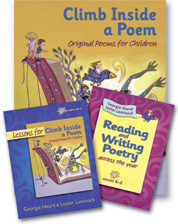Some Tips for Getting the Most Instruction Out of Your Interactive Read Aloud Time:
- Consider current and upcoming units
- Vary the kinds of texts that you read
- Genre
- Publisher: Capstone Press has great literary nonfiction (Found at Barnes and Noble)
- Sometimes there is a disconnect between what you read during interactive read aloud and the books kids are reading independently. Sometimes you might want to do a read aloud with the kind of books they are reading independently to show that there really is a lot of great, rich work they can do.
- Demo reading behaviors
- Ex: Using bookmarks
- Reading the blurb
- Taking time to figure how the book is organized (cumulative/episodic)
- Picture walk
- Demo reading skills
- Consider which skills you want to highlight:
- Activating Prior Knowledge
- Determining Importance
- Monitoring and Adjusting for Meaning
- Envisioning
- Accumulating the Text
- Predicting
- Inferring
- Empathy
- Synthesizing
- Critiquing
- Many skills are used in tandem. Ex: Need to accumulate text and infer before you can synthesizing
- As a teacher I have thoughtfully planned what skills I will model and have kids try, but it won't be one skill in isolation. There isn't a teaching point.
- Reading a book more than onces might influence what you model. Ex: Predicting works better when reading for the first time, Synthesizing might work better on a reread
- Think about how many times you will need to model first before having kids try it
- Be explicit as you think out loud. (Not just what you are thinking, but unpack how you got to that thinking [Step 1, step 2, step 3])
- Vary the practice methods
- Turn and talk [Sit with reading workshop partner during read aloud] -Using accountable talk prompts
- Acting out (Will show you how they are accumulating text, predicting, vocabulary, etc.)
- Stop and jot (If you don't have them practice, their post-its will be terrible)
- TIP: You might want to add a tab to the Reader's Notebook that is reserved for Read Aloud
- TIP: Might want to include a content section for content read alouds (Or a folder)
- Whole class conversations (Record some big ideas from read aloud on post-it. Once a week, start the read aloud with a whole class conversation)
 Recommended book: Climb Inside a Poem by Georgia Heard and Lester Laminack
Recommended book: Climb Inside a Poem by Georgia Heard and Lester Laminack - Support all learners in the room
- front load read alouds for ELLs (By the time you use a book in your mini lesson, it would be helpful if they have heard it 2-3 times, focusing on key vocabulary)
- Use checklists to track what your kids are doing (Checklists are fast and easy)
- Every time she has kids turn and talk, she will listen in on a different group of kids. She keeps this checklist on her clipboard. (She might be looking at a few skills across a week or across a few weeks)
- You can create one for each unit and during each assessment time.
- Checklist of skills she wants to focus on:
- Makes a prediction using their own life
- Makes a prediction using other stories/movies/TV
- Makes a prediction using this story
- Revise their prediction
- Infers character's feeling
- Infers character traits
- Infers character motivation
- Checklist might be about behaviors
- sits knee to knee
- looks partner in eyes
- takes turns talking
- adds on to what partner says
- Checklist might be about skills
Read Aloud: Recess Queen by Alexis O'neill
1st read: Lots of prediction
2nd read: Lots of character work
- Collect ideas on post-its and keep in the back of the book
- Use post-its as a way to launch whole group conversations
| Jobs of SPEAKER | Jobs of LISTENER(S) |
| Think before you speak | Be ready to speak next. Be patient. |
| Use a voice that can be heard. | Have a calm body. |
| Look at the listeners. | Look at the speaker. |
| Add on to the idea being about. |
Think: Do I agree or disagree? WHY? Do I understand what my friend is saying or should I ask a question? |
| Use evidence! | Think about more evidence! |
Create character traits and character feelings charts out of context.
Collect big ideas from across the school year.
Model how to create post-its:
How Do I Know When to Stop and Post-it?
- When a new character enters the story
- When you have an emotional reaction to the text
- When you notice big changes
- When a character acts out of character
Character:
Relationships:
Lessons:
Ways to Reflect and Write about Reading:
Friday is sorting day. How can we sort our post-its?
Reflect after sorting:
Ways to Reflect and Write about Reading:
Friday is sorting day. How can we sort our post-its?
Reflect after sorting:
- Most of my post-its seem to be about...
- It seems as though...
- Maybe this book is REALLY all about...
- These post-its show that I'm the kind of reader...
- The author probably wants me to notice...






.JPG)
No comments:
Post a Comment